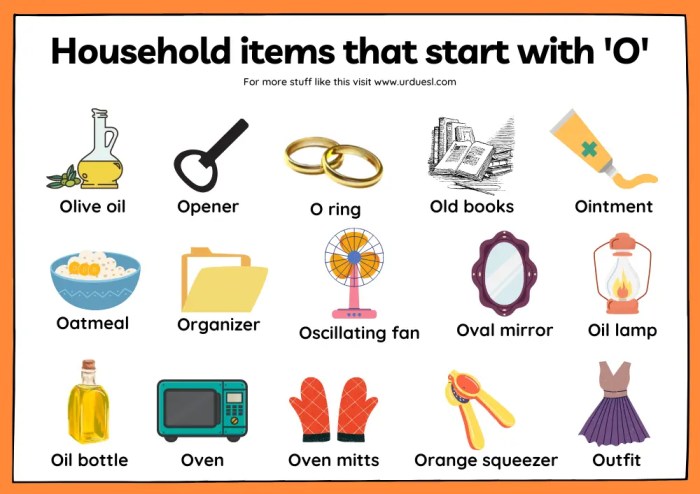Glycemic load glycemic index and insulin index explained: Ever wondered how different foods affect your blood sugar? This comprehensive guide delves into the fascinating world of glycemic load, glycemic index, and insulin index, offering a clear understanding of how these concepts relate to your diet. We’ll explore the science behind these measures, examining the factors that influence them and how they can help you make smarter food choices for optimal health.
We’ll start by defining each term and examining their interconnections. Understanding these concepts is crucial for making informed dietary decisions, especially if you’re looking to manage blood sugar levels. We’ll also look at the historical development of these concepts in nutrition science, and discuss how they relate to overall health. From there, we’ll break down the specifics of each concept, providing practical examples, and ultimately show you how to use this knowledge to create a more personalized approach to your diet.
Introduction to Glycemic Load, Glycemic Index, and Insulin Index
Understanding how our bodies process carbohydrates is crucial for making informed dietary choices. Three key concepts – Glycemic Load, Glycemic Index, and Insulin Index – help us quantify the impact of different foods on blood sugar levels and insulin response. These metrics are valuable tools for managing blood sugar, weight, and overall health, particularly for individuals with diabetes or those looking to optimize their diets.
Defining the Key Concepts
Glycemic Load (GL) quantifies the total amount of carbohydrates in a food that contribute to blood glucose levels. It takes into account both the glycemic index (GI) and the portion size. Glycemic Index (GI) measures how quickly a particular carbohydrate food raises blood glucose levels compared to a reference food (typically pure glucose or white bread). Insulin Index (II) assesses the impact of a food on insulin secretion, providing a more comprehensive picture of the body’s hormonal response.
These three measures offer a multifaceted view of how different foods affect our metabolism.
Relationship Between the Concepts
Glycemic Load considers both the glycemic index and the amount of carbohydrate consumed. A high GI food, if eaten in a small portion, might have a low GL. The Insulin Index further refines the picture by looking at how a food affects insulin release, which is closely linked to blood sugar regulation. Understanding the relationship between these three factors helps us appreciate the multifaceted impact of various foods on our metabolic processes.
Importance for Dietary Choices
Understanding Glycemic Load, Glycemic Index, and Insulin Index allows for more targeted dietary choices. Individuals can select foods that cause a slower, more gradual increase in blood sugar and insulin, minimizing potential blood sugar spikes and promoting better overall health. This is particularly beneficial for managing diabetes and maintaining healthy weight. By incorporating these factors into their diet, individuals can improve their metabolic health and reduce the risk of long-term health complications.
Historical Context in Nutrition Science
The concepts of Glycemic Load, Glycemic Index, and Insulin Index have evolved over time. Early research focused primarily on the glycemic index, with the development of the glycemic load providing a more nuanced understanding of carbohydrate impact. More recently, the insulin index emerged as a way to further explore the body’s hormonal response to food. This evolution reflects the ongoing pursuit of a more complete picture of dietary effects on metabolic health.
Key Differences
| Term | Definition | Key Factors | Example Food |
|---|---|---|---|
| Glycemic Load (GL) | The amount of carbohydrates in a food that contribute to blood glucose levels, considering both the glycemic index and portion size. | Glycemic index of the food, carbohydrate content per serving. | A medium-sized baked potato |
| Glycemic Index (GI) | Measures how quickly a carbohydrate food raises blood glucose levels compared to a reference food (typically pure glucose or white bread). | Rate of blood glucose increase, relative to reference food. | White bread |
| Insulin Index (II) | Assesses the impact of a food on insulin secretion. | Rate of insulin release in response to the food. | White rice |
Glycemic Index (GI) Explained

The glycemic index (GI) is a ranking of carbohydrates on how quickly they raise blood sugar levels. Understanding GI helps individuals tailor their diets to manage blood sugar and potentially reduce the risk of developing chronic health conditions. This knowledge empowers informed food choices that contribute to overall well-being.The GI measures how quickly a carbohydrate-containing food is digested and absorbed, influencing the rate at which glucose enters the bloodstream.
This impact on blood sugar levels varies significantly between different foods.
Methodology for Determining GI
The GI of a food is determined by comparing its effect on blood glucose levels to a reference food, typically pure glucose (or white bread). The process involves measuring blood glucose levels in individuals after consuming a set amount of carbohydrate from the test food and the reference food. Researchers use standardized protocols to ensure consistent results across different studies.
Calculation of GI Values
GI values are calculated using a formula derived from the area under the blood glucose response curve. This curve plots the blood glucose levels over a period of time after consuming the food. The area under the curve for the test food is compared to the area under the curve for the reference food. The GI value is then calculated as:
GI = (Blood glucose response to test food / Blood glucose response to reference food) x 100
This calculation provides a numerical representation of how quickly the food elevates blood glucose compared to the reference food.
Factors Influencing GI Values
Several factors influence a food’s GI value. Food processing significantly impacts GI. Highly processed foods often have a higher GI than their unprocessed counterparts due to the breakdown of complex carbohydrates during processing. Cooking methods also play a role. Cooking can either increase or decrease the GI, depending on the method.
For instance, boiling a starchy vegetable might lower its GI compared to frying it. The ripeness of fruits and vegetables can also influence GI. Ripened fruits tend to have a higher GI than unripe fruits.
GI Values of Common Foods
| Food | GI Value | Description | Impact on Blood Sugar |
|---|---|---|---|
| White Bread | 70 | Highly processed refined grain | Rapid increase in blood sugar |
| Brown Rice | 55 | Whole grain, less processed | Moderate increase in blood sugar |
| Sweet Potato | 60 | Starchy vegetable | Moderate increase in blood sugar |
| Oatmeal (rolled oats) | 55 | Whole grain, cooked | Moderate increase in blood sugar |
| Apples | 30 | Fruit, varying with ripeness | Moderate, slower increase in blood sugar |
| Carrots | 35 | Root vegetable | Moderate, slower increase in blood sugar |
Using GI Values for Dietary Choices
Knowing a food’s GI can help individuals make informed dietary choices. Foods with a low GI (e.g., fruits, vegetables, and whole grains) tend to cause a gradual increase in blood sugar, while foods with a high GI (e.g., white bread, white rice) lead to a rapid increase. This understanding can be helpful in managing blood sugar levels, particularly for individuals with diabetes or those seeking to improve their metabolic health.
By making conscious choices about the types of carbohydrates they consume, individuals can better control their blood sugar responses.
Glycemic Load (GL) Explained
Understanding the glycemic load (GL) of foods is crucial for managing blood sugar levels. While the glycemic index (GI) measures how quickly a food raises blood sugar, GL takes into account both the GI and the portion size. This makes GL a more practical tool for assessing the overall impact of a food on blood sugar control.Glycemic load is a more comprehensive measure of a food’s effect on blood glucose.
Understanding glycemic load, glycemic index, and insulin index is key to managing blood sugar. But what if you could use those same principles to turn your passion into profit? Explore how you can leverage your hobbies to generate income, like many people are doing, by checking out this article on who needs job hobbies make money too.
Ultimately, a deeper understanding of these nutritional metrics can help you make informed choices about your food and lifestyle, just like you’d want to make informed choices about your side hustles.
It considers not only the glycemic index (GI) of a food but also the amount of carbohydrate present in a typical serving. This makes it a more useful tool for individuals trying to manage their blood sugar levels as it accounts for the actual amount of carbohydrates consumed.
Factors Influencing Glycemic Load Values
The glycemic load of a food is determined by the amount of carbohydrates it contains and how quickly those carbohydrates are digested and absorbed. Factors influencing GL values include the type of carbohydrate, the presence of fiber, the level of processing, and the overall composition of the food. For example, refined carbohydrates tend to have a higher GL than complex carbohydrates because they are broken down more quickly.
Understanding glycemic load, glycemic index, and insulin index is key to managing your diet effectively. Knowing how different foods affect your blood sugar levels is crucial, and that’s where these metrics come in handy. If you’re looking to compare prices on various products, check out these 30 best price comparison apps you need download now 30 best price comparison apps you need download now.
Ultimately, this knowledge can help you make smarter food choices and improve your overall health, which in turn can help with managing these important dietary metrics.
Fiber slows down the digestion of carbohydrates, thus reducing the GL. Portion size also plays a significant role, as a larger portion of a high-GL food will result in a higher overall GL.
Examples of Foods with Varying Glycemic Loads
Different foods have varying GL values. Foods with a high GL tend to cause a rapid rise in blood sugar, while those with a low GL result in a more gradual increase. Understanding these differences helps individuals make informed dietary choices.
Glycemic Load Values Table
| Food | GL Value | Portion Size | Overall Impact |
|---|---|---|---|
| White bread (1 slice) | 12 | 1 slice | High rise in blood sugar |
| Potatoes (baked, medium) | 15 | 1 medium potato | Significant rise in blood sugar |
| Corn flakes (1/2 cup) | 11 | 1/2 cup | Moderate rise in blood sugar |
| Brown rice (1/2 cup cooked) | 7 | 1/2 cup cooked | Moderate rise in blood sugar, but slower than white rice |
| Apple (medium) | 2 | 1 medium apple | Low rise in blood sugar |
| Spinach (1 cup) | 1 | 1 cup | Minimal impact on blood sugar |
Comparison of GI and GL Values
The glycemic index (GI) focuses on the rate of glucose release, while the glycemic load (GL) takes into account both the rate and the amount of carbohydrates consumed. A food with a high GI may not have a high GL if the portion size is small, and vice versa. For instance, a large serving of a low-GI food can result in a significant blood sugar increase due to the overall carbohydrate content.
Therefore, GL provides a more comprehensive assessment of a food’s impact on blood sugar control.
Insulin Index (II) Explained
The Insulin Index (II) is a further refinement in understanding how foods affect blood sugar levels. While the Glycemic Index (GI) focuses on how quickly a carbohydrate-containing food raises blood glucose, the Insulin Index (II) delves deeper, examining the impact on insulin secretion. This additional layer of analysis is crucial because different foods, even those with similar GI values, can elicit significantly different insulin responses.The Insulin Index assesses the extent to which a food raises insulin levels in the blood.
Foods with a high Insulin Index will trigger a greater release of insulin, potentially leading to fluctuations in blood sugar and other metabolic responses. This is a crucial consideration for individuals managing blood sugar levels, particularly those with diabetes or prediabetes.
Methodology for Determining II
The Insulin Index is determined by measuring the area under the insulin response curve after consuming a specific amount of a given food. This is often compared to a reference food, such as white bread, which is assigned an arbitrary value. Participants typically fast overnight before consuming the food in question. Blood samples are taken at various intervals following the meal, and the insulin levels in the blood are measured.
Understanding glycemic load, glycemic index, and insulin index is key to managing blood sugar levels. It’s all about how quickly different foods impact your blood sugar, and can be really helpful for those managing their health. However, navigating these concepts can sometimes feel overwhelming, especially when you’re trying to communicate with a hypersensitive spouse about your dietary choices.
Learning how to effectively communicate these needs, like adjusting your approach to explain these concepts, can significantly improve understanding and support within the relationship. how to effectively communicate with a hypersensitive spouse This can make a huge difference in finding solutions that work for everyone. Ultimately, understanding these factors can be crucial for making informed food choices and maintaining a healthy lifestyle.
These measurements are then plotted to create the insulin response curve. The area under the curve is calculated, and the II value is derived by comparing it to the area under the curve for the reference food.
Factors Influencing II Values
Several factors contribute to the varying II values among different foods. The type of carbohydrate present plays a significant role. Complex carbohydrates, which are broken down more slowly, tend to have lower II values compared to simple carbohydrates. The presence of fiber, protein, and fat in a food also influences its II. Fiber slows down digestion, leading to a more gradual release of glucose and a lower insulin response.
Protein and fat can further delay the absorption of glucose, resulting in a milder insulin surge. Finally, the processing method of a food can significantly impact its II. Highly processed foods often have a higher II than their unprocessed counterparts.
Comparison of II Values Across Food Groups
| Food | II Value | Description | Impact on Insulin Response |
|---|---|---|---|
| White Bread | 70 | Commonly consumed grain product. | High insulin response; can cause rapid spikes and subsequent dips in blood sugar. |
| Brown Rice | 55 | Whole grain variety with added fiber. | Moderate insulin response; a more gradual release of glucose compared to white rice. |
| Potatoes (baked) | 85 | Starchy vegetable, often eaten as a side dish. | High insulin response; contributes to significant blood sugar fluctuations. |
| Sweet Potatoes (baked) | 65 | Nutrient-rich root vegetable. | Moderate insulin response; with some fiber content contributing to slower glucose release. |
| Oatmeal (rolled) | 50 | Whole grain cereal, often used as a breakfast item. | Moderate insulin response; gradual release of glucose, providing sustained energy. |
| Milk (whole) | 30 | Dairy product rich in nutrients. | Low insulin response; contains both lactose and fat, contributing to a more gradual release of glucose. |
Relationship Between II, GI, and GL
While related, the Insulin Index (II), Glycemic Index (GI), and Glycemic Load (GL) provide distinct perspectives on how foods affect blood sugar. The GI focuses on the rate of glucose release, the GL considers the total amount of carbohydrates in a serving, and the II specifically measures the insulin response. A food with a high GI might have a moderate II if it also contains significant amounts of fiber or protein.
Understanding these factors collectively provides a more comprehensive picture of a food’s impact on blood sugar regulation.
Practical Applications and Dietary Considerations
Understanding the glycemic index (GI), glycemic load (GL), and insulin index (II) is crucial for personalized dietary planning and managing blood sugar levels. These metrics provide valuable insights into how different foods affect your body’s response to carbohydrates. By incorporating foods with lower GI, GL, and II into your meals, you can promote stable blood sugar levels and potentially improve overall health.
Interpreting GI, GL, and II Values
GI, GL, and II values are expressed on a scale. Lower values generally indicate a slower and more gradual impact on blood sugar. A low GI food, for example, will cause a smaller, more gradual rise in blood glucose compared to a high GI food. The GL considers both the GI and the portion size of the food.
A high GI food with a small portion can have a lower GL than a low GI food with a large portion. The insulin index considers the impact on insulin release.
Strategies for Incorporating Low GI, GL, and II Foods
The key to effective dietary management is incorporating a variety of low GI, GL, and II foods into your daily meals. Start by identifying foods with low values for these metrics and gradually incorporate them into your existing meal plan. This approach allows for a smooth transition without drastic changes.
- Breakfast options rich in fiber, protein, and healthy fats can help to stabilize blood sugar levels. Oatmeal with berries and nuts, or a Greek yogurt with fruit and granola are good examples. These foods are known for their slower digestion, leading to a more gradual release of glucose into the bloodstream.
- Choose lean protein sources such as fish, poultry, and beans to complement your meals. Protein helps to slow down the absorption of carbohydrates, which can contribute to more stable blood sugar levels.
- Include plenty of non-starchy vegetables in your meals. These foods are low in carbohydrates and high in fiber, promoting satiety and aiding digestion.
The Role of Portion Control
Portion control plays a significant role in managing blood sugar levels. Even foods with a low GI can cause a spike in blood sugar if consumed in excessive amounts. Controlling portion sizes is essential to achieve consistent blood sugar management.
Examples of Meal Plans
Here are a few sample meal plans that incorporate GI, GL, and II principles:
- Breakfast: Oatmeal with berries and almonds, a side of scrambled eggs. This breakfast combines a low GI carbohydrate with protein and healthy fats.
- Lunch: Salad with grilled chicken or fish, a small portion of brown rice. This meal provides protein, healthy fats, and a small amount of complex carbohydrates.
- Dinner: Lentil soup with a side salad.
This is a good example of a meal rich in fiber and protein.
Low GI, GL, and II Alternatives
| High GI/GL/II Food | Low GI/GL/II Alternative | Nutritional Comparison | Preparation Methods |
|---|---|---|---|
| White bread | Whole-wheat bread | Higher fiber content, more complex carbohydrates | Toasted, sliced, or used in sandwiches |
| White rice | Brown rice | Higher fiber content, more nutrients | Boiled, steamed, or used in stir-fries |
| Potatoes (white) | Sweet potatoes | Higher fiber content, different nutrient profile | Baked, mashed, or roasted |
| Sugary cereals | Oatmeal | Higher fiber content, lower sugar content | Cooked with milk or water, topped with fruit and nuts |
Limitations and Considerations

While glycemic index (GI), glycemic load (GL), and insulin index (II) provide valuable insights into how different foods affect blood sugar, relying solely on these metrics for dietary recommendations can be problematic. These tools are helpful for understanding general patterns, but they don’t account for the complexities of individual responses and the interplay of various dietary factors.A crucial understanding is that GI, GL, and II values are averages based on large population studies.
Individual responses can vary significantly due to factors like genetics, gut health, and current metabolic state. Therefore, a one-size-fits-all approach based solely on these values is often inadequate.
Limitations of Using GI, GL, and II Values
GI, GL, and II values are intended as general guidelines, not precise predictors of individual responses. They represent the average impact of a food on blood sugar, but this average can mask considerable variations in individual reactions. The impact of a food on blood sugar levels can be influenced by several factors. These factors are not always accounted for in the standardized GI, GL, and II measurements.
Factors Influencing Accuracy of GI, GL, and II Measurements
Numerous factors can influence the accuracy of GI, GL, and II measurements. The preparation method of the food significantly affects the results. For example, cooking methods like steaming or baking can influence the GI value compared to frying. The portion size also impacts the glycemic response, as a larger portion will result in a higher glycemic load.
The presence of other foods in a meal, like protein and fiber, can lower the overall glycemic response, a phenomenon known as the “mixed meal effect”. Finally, individual variations in metabolism, gut health, and overall health play a significant role.
Importance of Considering Individual Needs and Health Conditions
Individual needs and health conditions should always be considered alongside GI, GL, and II values. For instance, someone with diabetes requires a more tailored approach to carbohydrate intake, focusing on the overall nutritional profile of the food, not just its GI. Similarly, pregnant women or those with specific dietary needs should consult a registered dietitian or healthcare professional to tailor their diets.
Potential Downsides of Strict Adherence to GI, GL, and II Guidelines
Strict adherence to GI, GL, and II guidelines can sometimes lead to overly restrictive diets. This may result in nutritional deficiencies or feelings of deprivation. A balanced approach, considering various nutrients and food groups, is generally more sustainable and beneficial for long-term health. Over-reliance on GI, GL, and II values may also lead to a narrow focus on carbohydrate intake, neglecting other important dietary factors like protein and healthy fats.
Moreover, this may create an unhealthy obsession with numbers rather than enjoying food in a balanced way.
Need for a Balanced Approach to Nutrition and Overall Health, Glycemic load glycemic index and insulin index explained
A balanced approach to nutrition is paramount for overall health and well-being. This approach should emphasize the variety of nutrient-rich foods from all food groups. The focus should be on whole, unprocessed foods, including fruits, vegetables, lean proteins, and healthy fats. This balanced approach promotes a holistic view of nutrition, considering not just the glycemic impact but also the overall nutritional value of the diet.
By focusing on the whole picture rather than isolated metrics, a person can develop a sustainable and healthy dietary pattern.
End of Discussion: Glycemic Load Glycemic Index And Insulin Index Explained
In conclusion, understanding glycemic load, glycemic index, and insulin index empowers you to take control of your dietary choices and potentially improve your health. While these tools can be incredibly helpful, it’s important to remember that they’re just one piece of the puzzle. A balanced approach to nutrition, encompassing a wide variety of foods, is key for overall well-being.
We’ve covered the science, practical applications, and limitations of using these metrics, giving you the knowledge to navigate the world of food with confidence and make informed decisions for your health.







